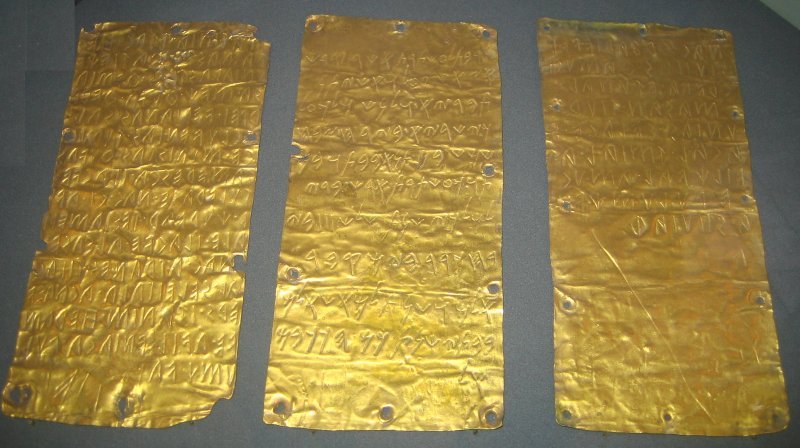Pyrgi Gold Tablets: A Rare Ancient Bilingual Treasure
Ellen Lloyd - AncientPages.com - Dating back to 500 B.C., the Pyrgi gold tablets were discovered in 1964 in an excavation of a sanctuary in ancient Pyrgi, the port of the southern Etruscan town of Caere in Italy.
Pyrgi Gold Tablets. Credit: Public Domain
The three gold plates contain holes around their edges, indicating that they were likely bound together at one point. What makes the tablets so unique is that they are bilingual.
Two tablets are inscribed in the Etruscan language, the third in Phoenician, and are today regarded as the oldest historical source of pre-Roman Italy among the known inscriptions. They contain a dedication by King Thefarie Velianas to the Phoenician goddess Astarte, also known as Ishtar.
The cult of the ancient Mesopotamian goddess associated with love, beauty, sex, desire, fertility, war, justice, and political power spread throughout the region. Ishtar was initially worshipped in Sumer as Inanna. In time, she was also honored by the Akkadians, Babylonians, and Assyrians.
The Pyrgi gold tablets are rare and unusual. They are an ancient treasure both from a linguistic and a historical point of view.
The tablets allow researchers to use the Phoenician version to read and interpret the otherwise undecipherable Etruscan.
Pyrgi Gold Tablets. Credit: Public Domain
According to William J. Hamblin, a professor of history at Brigham Young University, the three Pyrgi gold tablets are a prime example of the spread of the Phoenician practice of writing sacred texts on golden plates from their original center in Phoenicia, via Carthage, to Italy, and is roughly contemporary with the Book of Mormon’s claim that sacred texts were written on metal plates by the Phoenicians’ closer neighbors, the Jews.
There was no need to decipher these fascinating ancient tablets because the Phoenician text was long known to be Semitic. Though the artifacts may not be regarded as an ancient enigma, they are nevertheless of extraordinary historic value and give us a unique insight into how older people communicated their beliefs and showed worship of their beloved goddess Astarte (Ishtar, Inanna).
The Phonecian inscription reads:
To lady Ashtarot,
This is the holy place, which was made, and which was given by Tiberius Velianas who reigns over the Caerites.
During the month of the sacrifice to the Sun, as a gift in the temple, he built an aedicula (an ancient shrine).
For Ashtarot raised him with Her hand to reign for three years from the month of Churvar, from the day of the burial of the divinity [onward].
And the years of the divinity statue in the temple [shall be] as many years as the stars above.
The Pyrgi gold tablets are now kept at the National Etruscan Museum, Villa Giulia, Rome.
Written by Ellen Lloyd – AncientPages.com
Updated on May 28, 2023
Copyright © AncientPages.com & Ellen Lloyd All rights reserved. This material may not be published, broadcast, rewritten or redistributed in whole or part without the express written permission of AncientPages.com and Ellen Lloyd
More From Ancient Pages
-
 Ancient DNA Reveals How Yamnaya People Re-Wrote Northern Europeans’ Genetic Story 5,000 Years Ago
DNA | Jan 12, 2024
Ancient DNA Reveals How Yamnaya People Re-Wrote Northern Europeans’ Genetic Story 5,000 Years Ago
DNA | Jan 12, 2024 -
 New System Will Give Stone Age Skeletons And Mummies Unique Names
Archaeology | Oct 2, 2024
New System Will Give Stone Age Skeletons And Mummies Unique Names
Archaeology | Oct 2, 2024 -
 Basajaun: Giant Blacksmith, ‘Lord Of The Woods’ And How People Learned Secrets Of Agriculture
Featured Stories | Aug 27, 2020
Basajaun: Giant Blacksmith, ‘Lord Of The Woods’ And How People Learned Secrets Of Agriculture
Featured Stories | Aug 27, 2020 -
 Saint Botvid – Viking Who Was Killed By A Slave He Granted Freedom
Featured Stories | Apr 10, 2023
Saint Botvid – Viking Who Was Killed By A Slave He Granted Freedom
Featured Stories | Apr 10, 2023 -
 Oklahoma’s Mysterious Hollow Hill – Hidden Artifact Reveals A Frightening Story – Part 1
Ancient Mysteries | Jul 8, 2020
Oklahoma’s Mysterious Hollow Hill – Hidden Artifact Reveals A Frightening Story – Part 1
Ancient Mysteries | Jul 8, 2020 -
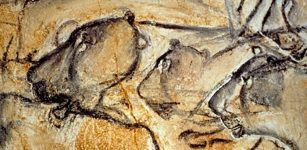 Chauvet-Pont d’Arc Cave And Surrounding Landscape – What Did The Ancient Artists See?
Archaeology | Apr 29, 2021
Chauvet-Pont d’Arc Cave And Surrounding Landscape – What Did The Ancient Artists See?
Archaeology | Apr 29, 2021 -
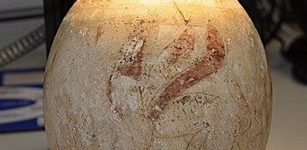 5,000-Year-Old Mystery: Decoration Of Eggs Predates Our Easter Tradition
Archaeology | Apr 9, 2020
5,000-Year-Old Mystery: Decoration Of Eggs Predates Our Easter Tradition
Archaeology | Apr 9, 2020 -
 Old Royal Crime – Dark Riddle Of Young Princes In The Tower Of London
Featured Stories | Jun 14, 2020
Old Royal Crime – Dark Riddle Of Young Princes In The Tower Of London
Featured Stories | Jun 14, 2020 -
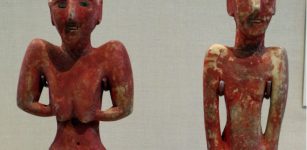 Male-Female Roles 7,000 Years Ago Were Less Traditional Than Previously Thought – New Study Reveals
Archaeology | Jun 30, 2022
Male-Female Roles 7,000 Years Ago Were Less Traditional Than Previously Thought – New Study Reveals
Archaeology | Jun 30, 2022 -
 Riddle Of The Ancient Sarcophagus And Its Strange Properties – Can Science Solve This Mystery?
Ancient Mysteries | Nov 7, 2019
Riddle Of The Ancient Sarcophagus And Its Strange Properties – Can Science Solve This Mystery?
Ancient Mysteries | Nov 7, 2019 -
 How Was The Mysterious Menga Dolmen Built By Neolithic People? New Scientific Theory Presented
Archaeology | Aug 28, 2024
How Was The Mysterious Menga Dolmen Built By Neolithic People? New Scientific Theory Presented
Archaeology | Aug 28, 2024 -
 Discovery Of An Unusually Large Ancient Artifact May Confirm Powerful Myth Of A Mysterious Race
Featured Stories | Oct 8, 2024
Discovery Of An Unusually Large Ancient Artifact May Confirm Powerful Myth Of A Mysterious Race
Featured Stories | Oct 8, 2024 -
 New DNA Evidence Rewrites Ancient History Of Pompeii
DNA | Nov 8, 2024
New DNA Evidence Rewrites Ancient History Of Pompeii
DNA | Nov 8, 2024 -
 Stonehenge Is Older Than Mankind – Archaeologist Suggests
Archaeology | Apr 12, 2018
Stonehenge Is Older Than Mankind – Archaeologist Suggests
Archaeology | Apr 12, 2018 -
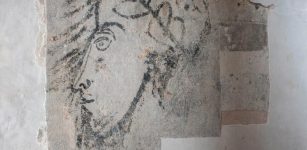 Sir Walter Raleigh ‘Self-Portrait’ Discovered Behind Walls In The Tower Of London
Archaeology | Nov 5, 2018
Sir Walter Raleigh ‘Self-Portrait’ Discovered Behind Walls In The Tower Of London
Archaeology | Nov 5, 2018 -
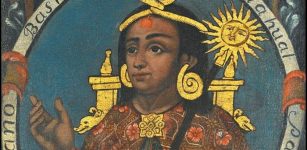 Story Of Atahualpa: The Last Emperor Of The Inca Empire
Featured Stories | Feb 4, 2016
Story Of Atahualpa: The Last Emperor Of The Inca Empire
Featured Stories | Feb 4, 2016 -
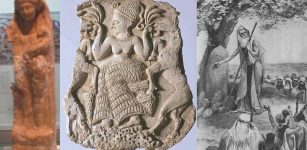 Lost And Forgotten Goddess Asherah – Queen Consort Of The Sumerian God Anu And Ugaritic God El
Biblical Mysteries | Apr 12, 2017
Lost And Forgotten Goddess Asherah – Queen Consort Of The Sumerian God Anu And Ugaritic God El
Biblical Mysteries | Apr 12, 2017 -
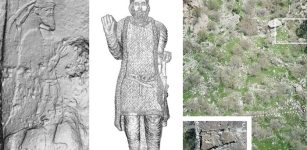 Mysterious 2,000-Year-Old Lost City Of Natounia May Have Been Found!
Archaeology | Jul 20, 2022
Mysterious 2,000-Year-Old Lost City Of Natounia May Have Been Found!
Archaeology | Jul 20, 2022 -
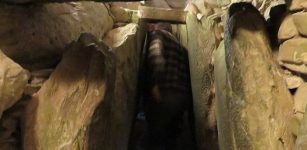 Gigantic Neolithic Newgrange Monument: A Temple, Astronomical Observatory Or Ancient Tomb?
Civilizations | Aug 14, 2016
Gigantic Neolithic Newgrange Monument: A Temple, Astronomical Observatory Or Ancient Tomb?
Civilizations | Aug 14, 2016 -
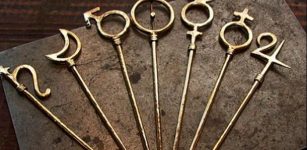 Number ‘Seven’: Mystical Number Of The Universe And One Of The Most Sacred Numbers
Ancient Symbols | Feb 14, 2017
Number ‘Seven’: Mystical Number Of The Universe And One Of The Most Sacred Numbers
Ancient Symbols | Feb 14, 2017


